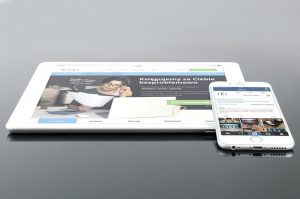How often do you sit down and think about your future? What’s it going to be like? What technology will you be using? Will you be working at your current job beyond a certain point?
Time is one of those things that we have a lot of but feel like we don’t have much of. Though we can appreciate (and learn) from the past, a lot of us enjoy questioning what will happen in the future.
Scientists have theories, stockbrokers look at trends, and now, human resources will be able to utilize “data scientists.” These are individuals who create action plans based on people analytics. With HR tools that provide data on employees, companies can now see what the future of their office will go.
We did some research on different employee engagement statistics and found a lot of interesting facts that show where the future of work will look like.
Tech Friendly
The stats that we found prove that the work environment is more tech friendly than ever:
- 2 / 5 “Millennials” Check Their Phone For New Messages, 1 /4 Non-Millennials “Constantly” Check Their Phone For Messages
- 53% Of Employees Use Instant Message With Coworkers
- 35% Of Employees Prefer E-Mail To Communicate
You have probably started seeing a major shift in the way employees are communicating with one another already. People are communicating faster and more efficiently than ever.
There are enterprise tools that can allow you to speak to work colleagues from all around the world.
It’s not just millennials (though they do make up the majority), but all generations of employees are interested in using some form of text-based communication, to share files, ideas, and even silly videos.
E-mails are still a go-to when it comes to communicating, but lately it has been slowly coming to a decline. Which begs the question …
Are E-Mails reaching their demise?
The numbers seem to prove that E-mails are becoming a less effective communication tool within organizations. Larger enterprises are now using group communication tools and conducting one-on-one meetings, in order to get management actively involved in improve the company’s engagement.
Even tools like Officevibe are used to give employees a voice within their organization. As the survey’s feedback feature can help identify problems in the office with management.
Team-Oriented
Here are some stats that show that future workplaces will have more of a team-oriented and friendly environment:
- 2 /3 Employees seek friends within their workplace
- 46% of employees find that simply talking is most valuable form of communication
- 20% of Millennials want to obtain some type of upper management position
There are benefits for having friends at work, as it allows your office to be more productive and have a lot more open communication. If we look at the past, there were a lot of conflicting views about work friends, as if it messed up productivity.
Nowadays, companies are going for an open office space, as it creates a friendly and innovative atmosphere. As the last stat says, Gen Y’s and Millennials aren’t prone to go for that big C-Level position.
Create A Team Atmosphere
Less Leadership Means:
Hierarchy won’t be as prominent as before. Workplaces will start picking up “flat-hierarchies,” creating more camaraderie and teamwork among departments. Management will have a role of overlooking tasks, and setting up their implementation.
Goal-Oriented Offices
We found that these new methodologies are benefitting organizations and allowing them to work faster than ever before.
- OKR’s Setting “Objective and Key Results” can increase productivity by at least 30% for departments that set clear and concise goals.
- 8/10 projects fail! The “Fail fast!” mentality allows businesses to find out if an initiative will work without wasting a lot of time and resources.
- 40% of organizations have implemented alternative work schedules to replace the traditional Nine-to-Five
OKR’s were started as an initiative by tech companies out in the valley to optimize their workflow and create a strong vision for an individual’s or department’s goals, and make sure they have key results to reflect how they can reach that objective.
We have started using this idea over here and we saw that we were more successful, for the mere fact that we set ambitious goals that seemed ridiculous, but, we reached a good percentage of them. Allowing us to have better results week-to-week, month-to-month, and hopefully, year-to-year.
Failing fast is the way to go. There has always been a negative stigma around failure, and there are plenty of inspirational stories that prove that people’s greatest successes come after failure.
So adopting a “fail fast!” methodology allows companies to test something out quickly, as opposed to spending time and resources to build something up that might not work. One other thing that should be considered is to create a minimum viable proposition for your idea or initiative. Testing slowly to see what’ll work, will allow you to see if it’s worth iterating on.
At the end, the company needs results
Result Only Work Environment (or ROWE) will be beneficial if it’s not abused. Companies who aren’t already using this method will begin to see the direct results and productivity that occurs, when they don’t put a cap on when their employees can work.
The CultureTalk above features the person who invented ROWE.
Data-Driven HR
As companies are using metrics to drive different departments, HR is not lagging behind on this either. Human resource departments are doing their best to get the best out of their employees and keep them as happy and productive as possible. Here’s how:
- KPI’s Key Performance Indicators measured, iterated, and improved, through employee’s tenure.
- 84% participation on engagement platforms allow companies to find their weaknesses and improve.
- 10.4% is the current average turnover rate caused by low engagement
- That’s nearly 700k lost every year, per every 100 employees that leave*
*Calculated using engagement ROI calculator
KPI’s are what should be measured when it comes to productivity. These are the performance indicators that’ll measure an employee’s happiness and how they contribute to the company. On a global level, KPI metrics can be used to see where a company can improve upon.
Employee engagement tools can be used to find out how a company can improve. Pulse surveys, for example, can get weekly data on an area that a company can improve upon.
Improving employee engagement can lessen turnover by at least 5% allowing employees to be ambassadors, as opposed to job-hunting consistently.
The “quantifiable employee”…
The use of data will be used heavily to make employees happier and more productive. The more these technologies advance, the easier it’ll be to pinpoint the current problems and organization has and how it can be made better.
Help Us Change The Future Of Work!
We are having a good time in the present, as we’re helping improve companies worldwide. We’ll be looking to working with your company and educating them about the future of work, along with giving employees a voice!
As always, you can share the article, or contact us @Officevibe
(308)








